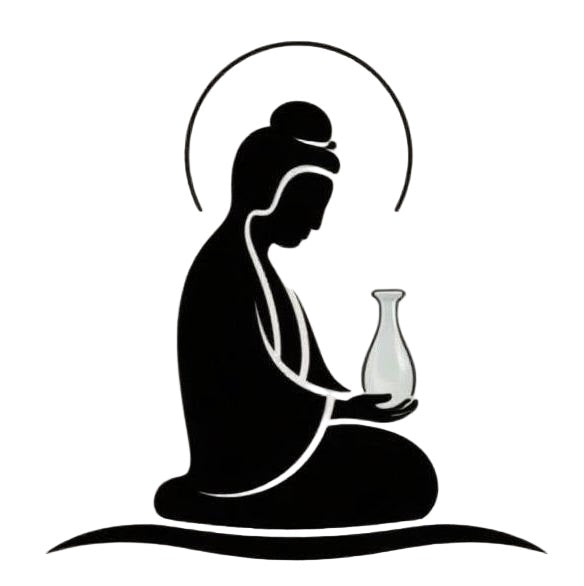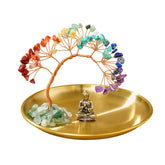All You Need To Know About Lotus Flower Meaning
The lotus flower meaning represents one of the most powerful and universal spiritual symbols across Eastern and Western traditions. This remarkable bloom grows in muddy waters yet rises above the surface to flower with exceptional beauty, making it a perfect metaphor for human transformation and spiritual awakening. Understanding the depth of lotus symbolism provides valuable insights into how we can navigate challenges and emerge with greater wisdom and purity. This comprehensive guide explores the multifaceted meanings of the lotus flower across different cultures, spiritual practices, and practical applications for modern life.
The Universal Symbolism of the Lotus Flower
Core Spiritual Meanings
The lotus flower spiritual meaning encompasses several profound concepts that resonate across cultures:
-
Purity and Enlightenment: Despite growing in muddy waters, the lotus emerges clean and beautiful, symbolizing the ability to maintain purity amid challenging circumstances. This represents spiritual enlightenment attained while living in the material world.
-
Rebirth and Renewal: The lotus closes at night and sinks underwater, then reemerges and blooms again at dawn. This daily cycle symbolizes resurrection, rebirth, and the renewal of life. In ancient Egyptian culture, this associated the lotus with the sun and creation.
-
Transformation and Growth: The journey from mud to magnificent bloom represents spiritual evolution, demonstrating how challenges can become opportunities for growth and beauty.
-
Divine Beauty and Fertility: The lotus's exquisite form has long been associated with divine beauty, creation, and fertility across multiple cultural traditions.
A study published in the Journal of Ethnopharmacology notes that traditional use of lotus flowers in Ayurvedic medicine dates back 3,000 years, supporting its longstanding association with healing and spiritual practices.
Lotus Flower Meaning in Buddhism
Sacred Symbolism
In Buddhism, the lotus flower meaning holds particularly deep significance, representing several key spiritual principles:
-
Purity of Body, Speech, and Mind: The lotus symbolizes complete purity, as it rises clean from muddy water, representing the potential to achieve enlightenment despite living in an impure world.
-
Spiritual Awakening: The blooming lotus represents full enlightenment and the opening of the heart to ultimate reality. Buddha is often depicted sitting on a lotus throne, symbolizing his divine birth and enlightened nature.
-
Non-Attachment: The lotus plant is rooted in mud but remains untouched by it, teaching the lesson of living in the world without being stained by its impurities.
Different Colors and Their Meanings
Buddhism attributes specific meanings to different colored lotuses, each representing different aspects of the spiritual path:
-
White Lotus: Mental purity, spiritual perfection, and complete enlightenment
-
Pink Lotus: The supreme lotus, representing the highest enlightenment and associated with the historical Buddha
-
Red Lotus: Love, compassion, passion, and the qualities of the heart
-
Blue Lotus: Wisdom, knowledge, and victory over the senses
-
Purple Lotus: Mysticism, spiritual awakening, and the esoteric teachings
Lotus Flower in Hinduism
Divine Associations
In Hindu tradition, the lotus flower meaning is deeply connected to divinity and creation:
-
Divine Beauty and Prosperity: The lotus is associated with beauty, prosperity, fertility, and eternity. Many Hindu deities are depicted seated on lotus flowers or holding lotus blossoms.
-
Spiritual Authority: Important spiritual figures are often shown standing or seated on lotus platforms, symbolizing their divine authority and purity.
-
Creation Symbolism: In Hindu cosmology, a lotus flower blooming from the navel of Vishnu represents the birth of the universe, with Brahma emerging from the lotus to create the world.
Deities Associated with Lotus
Several Hindu deities have specific connections to the lotus flower:
-
Lakshmi: The goddess of wealth and prosperity is often shown seated on a pink lotus, symbolizing purity, beauty, and spiritual abundance
-
Vishnu: Described as "Lotus-Eyed," representing divine beauty and perception
-
Saraswati: The goddess of knowledge is associated with the white lotus, symbolizing purity of wisdom
Lotus Symbolism in Ancient Egypt
Historical Significance
The lotus flower meaning in ancient Egyptian culture centered on creation, rebirth, and the sun:
-
Creation and Rebirth: The blue lotus (Nymphaea caerulea) was prominent in Egyptian mythology, associated with the sun god Ra and the concept of rebirth because of its daily opening and closing cycle.
-
Unity of Egypt: The lotus represented Upper Egypt, while the papyrus plant symbolized Lower Egypt. Together, they represented the unified kingdom.
-
Funerary Symbolism: Lotuses were placed in tombs as symbols of resurrection and the promise of eternal life. The Book of the Dead includes spells for transforming into a lotus, indicating its importance in the afterlife.
Archaeological evidence from tomb paintings and hieroglyphs shows the lotus was used in religious ceremonies as early as 2500 BCE, with remains found in the burial chamber of Ramses II.
Lotus Flower in Chinese Culture
Cultural and Spiritual Meanings
In Chinese tradition, the lotus flower meaning encompasses several important virtues:
-
Purity and Integrity: The lotus is admired for growing from mud without being stained, representing the ability to maintain moral integrity in challenging circumstances.
-
Harmonious Marriage: A lotus with a leaf and bud together represents a harmonious union and happy marriage.
-
Summer and Fruitfulness: The lotus blooms in summer, symbolizing fertility, fruitfulness, and the fullness of life.
-
Buddhist Influence: With the introduction of Buddhism to China, the lotus acquired additional spiritual meanings related to enlightenment and purity of mind.
Feng Shui Applications of Lotus Flower
Enhancing Energy Flow
In feng shui practice, the lotus flower symbolism is used to enhance specific energies within a space:
-
Spiritual Growth: Placing lotus images or sculptures in meditation areas supports spiritual development and inner peace.
-
Purification: Lotus symbols are used to purify energy in homes and workplaces, clearing stagnant or negative chi.
-
Academic Success: Displaying lotus images in study areas helps promote concentration, wisdom, and academic achievement.
Practical Placement Tips
-
East sector: For health and family harmony
-
Southeast sector: For wealth and abundance
-
North sector: For career success and opportunities
-
Meditation spaces: For spiritual connection and peace
The Lotus in Modern Spirituality
Contemporary Interpretations
The lotus flower meaning continues to evolve in modern spiritual contexts:
-
Personal Transformation: Many people use the lotus as a symbol for their personal growth journeys, representing overcoming challenges and emerging stronger.
-
Mindfulness and Meditation: The lotus position in meditation (padmasana) mimics the flower's form, promoting stability and connection during practice.
-
Yoga Practice: Lotus imagery is prevalent in yoga studios, representing the union of body, mind, and spirit that yoga seeks to cultivate.
Scientific Perspective
Recent research has identified fascinating biological aspects that enhance the lotus symbolism:
-
Self-Cleaning Properties: The lotus leaf exhibits the "lotus effect," where water droplets bead up and roll off, carrying dirt particles with them. This natural self-cleaning mechanism reinforces the symbolism of purity.
-
Thermoregulation: Lotus flowers can regulate their temperature, maintaining warmth that attracts pollinators, symbolizing self-sufficiency and resilience.
How to Incorporate Lotus Energy in Daily Life
Practical Applications
Integrating lotus flower meaning into your daily routine can enhance spiritual practice:
Meditation Practices
-
Visualize a lotus opening at your crown chakra during meditation
-
Use lotus mandalas for focus and concentration
-
Chant mantras associated with the lotus, such as "Om Mani Padme Hum"
Home Decor
-
Display lotus artwork or sculptures in entryways to purify incoming energy
-
Use lotus-patterned textiles in bedrooms for peaceful sleep
-
Place lotus symbols in workspaces to maintain clarity and focus
Jewelry and Personal Items
-
Wear lotus jewelry as a reminder of your spiritual goals
-
Carry a lotus image in your wallet or phone case for daily inspiration
-
Use lotus-themed meditation cushions or altar cloths
Lotus Flower in Different Colors and Their Meanings
Color Symbolism Guide
Each lotus color carries distinct energetic qualities and lotus flower meanings:
White Lotus
-
Represents mental purity, spiritual perfection, and peace
-
Associated with the crown chakra and divine connection
-
Ideal for meditation spaces and spiritual practices
Pink Lotus
-
Symbolizes love, compassion, and emotional healing
-
Connected to the heart chakra and romantic relationships
-
Perfect for bedrooms and relationship corners
Red Lotus
-
Signifies passion, love, and emotional expression
-
Related to the root chakra and life force energy
-
Useful for energizing spaces and stimulating activity
Blue Lotus
-
Denotes wisdom, knowledge, and intellectual pursuits
-
Associated with the throat chakra and clear communication
-
Excellent for offices, studies, and learning environments
Frequently Asked Questions
What does a lotus flower tattoo mean?
Lotus flower tattoos typically symbolize spiritual growth, resilience, and the ability to overcome challenges. The specific meaning varies with color and style:
-
Unopened bud: Represents potential and spiritual promise
-
Blooming flower: Signifies enlightenment and full awakening
-
With Sanskrit symbols: Enhances specific spiritual intentions
How is the lotus flower different from the water lily?
While often confused, lotus flowers have distinct differences:
-
Lotus flowers: Rise above water on tall stems, have circular seed pods, and hold cultural significance in Asian traditions
-
Water lilies: Float on water surface, have irregular seed pods, and are more common in Western symbolism
Can I grow lotus flowers at home?
Yes, lotus flowers can be grown in containers or ponds with proper care:
-
Need at least 6 hours of direct sunlight daily
-
Require warm temperatures and still water
-
Bloom best in nutrient-rich soil with adequate space
-
Symbolically, growing lotus represents nurturing spiritual growth
What is the significance of lotus flowers in meditation?
In meditation practice, the lotus symbolizes:
-
The journey from ignorance to enlightenment
-
The ability to remain undisturbed by external circumstances
-
The opening of spiritual centers and energy channels
-
A sacred space for connecting with higher consciousness
Conclusion: Embracing Lotus Wisdom in Modern Life
The profound lotus flower meaning offers timeless wisdom for navigating contemporary challenges. This remarkable symbol teaches us that growth often emerges from difficult circumstances, that purity can be maintained despite surrounding impurities, and that each day offers opportunities for renewal and rebirth. By understanding the depth of lotus symbolism across cultures and spiritual traditions, we can incorporate this powerful imagery into our daily lives as a reminder of our own potential for transformation and enlightenment.
Whether through meditation practices, home decor, or personal reminders, the lotus flower continues to inspire millions worldwide with its message of hope, resilience, and spiritual possibility. Its enduring appeal across millennia and cultures testifies to the universal human yearning for growth, purity, and connection to something greater than ourselves.
Discover Lotus-Inspired Products: Explore our collection of lotus-themed spiritual tools, jewelry, and home decor at fengshuiandbuddha.com to incorporate this powerful symbolism into your daily practice. Each piece is designed to help you connect with the transformative energy of the lotus flower.



















